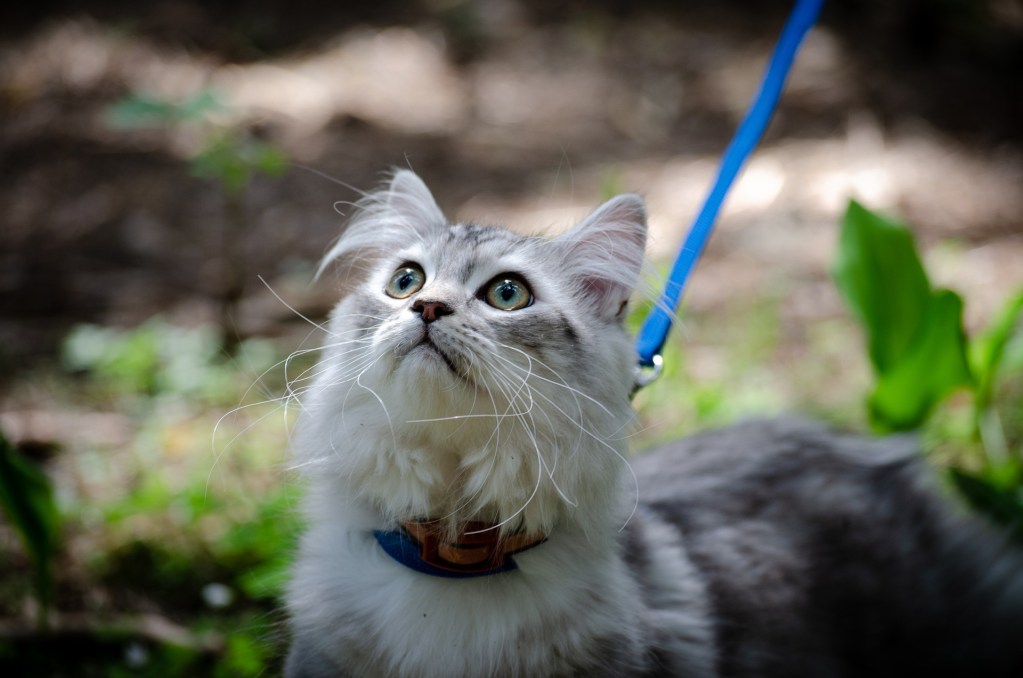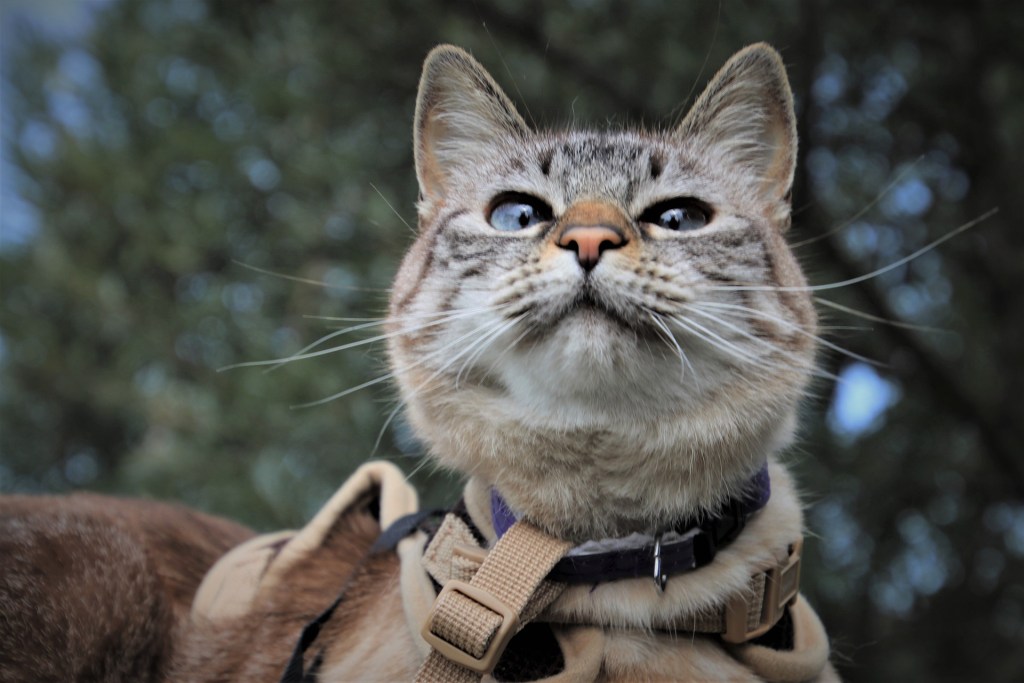Making sure your cat gets enough exercise can be a real challenge, especially if you have an indoor cat who enjoys snoozing most of the day. But exercise is an important element of your cat’s health because it can help prevent boredom, and it’s essential in keeping your cat at a healthy weight. While keeping your cat indoors can be a great way to keep him safe, walking your cat on a harness and leash also offers a refreshing opportunity for him to get outside. But walking your cat requires a lot of preparation, and it’s important to take some steps to keep him safe. From harness fit to the best way to introduce walking to your cat, the more you understand about leash walking, the better the process is likely to go.

The pros of leash walking your cat
According to Jackson Galaxy, leash walking offers many benefits. Taking your cat for a walk can give your cat extra exercise, which is valuable for his health. When your cat is outside, his senses will all be on high alert, so a walk can help to prevent boredom and give him interactive play sessions.
Walking your cat is different than walking a dog. Your cat will be the one to dictate where you go and when you stop, so leash walking can be a valuable way to bond with your pet. It will also force you to slow down and relax, which can be a great break from your busy life. When you walk your cat, you’ll have a chance to observe her reactions to the outdoors and everything she encounters, so you’ll get to know your cat better.
The cons of leash walking your cat
According to Preventive Vet, leash walking isn’t without its downsides. Some cats will love a chance to explore the outdoors while others will need more support. Confident cats will likely take to walks well, but less confident cats may have trouble with feeling comfortable in new places and situations. You’ll need to be patient with your cat, and in some cases, some cats might just never take to walks. Cats who are highly anxious or easily startled may find the walks more stressful than anything, and they might be better off with extra playtime and attention in the safety of their home.
You’ll need to walk your cat in a harness that’s attached to the leash, but cats can escape from any and every harness. You’ll need to test some different styles until you find a harness that’s stretchy yet secure.
Even with your cat in a harness, there are still potential dangers outside. It’s important to closely monitor your cat, especially if you encounter scary situations like loud vehicles or other pets. It’s also possible for an animal, like a dog, to attack or chase your cat, so you’ll need to stay vigilant the entire time you’re outside together.

Tips for getting your cat used to going for walks
Preventive Vet recommends that you spend time gradually getting your cat used to wearing a harness and leash. Choose a time when your cat is relaxed and put the harness near your cat. Then give him his favorite treat. Repeat the process by moving the harness a little bit closer and giving your cat a treat. Once the harness is next to your cat, hold it up and let your cat sniff it, then reward him with a treat. You may need to repeat this process over several days until your cat is comfortable with the harness held up for him to sniff.
Once your cat accepts the harness, touch it to her body for a second and reward her, then progress to holding the harness against her body for longer periods of time. Gradually work your way up to draping the harness on her body and then putting the harness on. If your cat is ever uncomfortable or stressed, back up to the previous step and repeat the process until she’s comfortable again.
You’ll also need to teach your cat to walk on the leash. This will take some practice for you both, and you’ll need to learn about how you move and which ways of controlling the harness are most comfortable for your cat. It can be helpful to teach your cat commands like sit and stay, which you can accomplish by using cat treats. Make sure that your cat is entirely comfortable walking on a leash indoors before you head outside.
When you do venture outside with your cat, keep your initial walks very short and stay within your door. Bring plenty of cat treats with you to reward your cat, and try to leave your home’s door open so your cat can decide when he’s done and ready to go back inside. It can also be helpful to bring along your cat carrier and leave the door open, which will give your cat a safe space to retreat into if he gets uncomfortable.
Before you take your cat outside, make sure that he’s vaccinated for the feline leukemia virus, rabies, feline rhinotracheitis, feline calicivirus, and feline panleukopenia. It’s also important to make sure that she is current on all flea, tick, and heartworm preventatives. Most importantly, make sure that your cat is microchipped and that she’s wearing a breakaway collar with an ID tag, just in case she gets loose.


